Jim and Helen were off on an early Ferry. Not a sunny day. I intended to go to Jura. I drove down to Port Askaig and parked up in the ferry queue. The ferry man came to see me, wanting to look at my overhang (well, the Van’s) and he sucked his teeth, stating that it was touch and go whether I would ground on the steep step the vehicles had to go up. I decided to be prudent and not risk it. So I still haven’t visited Jura – and the Paps are not an easy climb. They aren’t abandoned, just parked up for another year.
So I booked onto an afternoon crossing and went off to discover, in the rain, Finlaggan.
Finlaggan was the seat of the Lords of the Isles. There are islands in Loch Finlaggan which were the administration centre of the Lordship of the Isles from the 13th century until 1493 when the lordship of the Isles fell to James IV (of Scotland).
The Lordship of the Isles emerged from a sea-power based hybrid of Viking/Gaelic rulers of the west coast and islands of Scotland in the Middle Ages. While they were nominal vassals of the Kings of Norway, Scotland and Ireland these chiefs remained functionally independent for many centuries. Their territory includkye, Ross, Knoydart, Ardnamurchan and Kintyre and at their height they were the third greatest landowners and powerful Lords in Britain.
Since 1493, the eldest male child of the reigning Scottish (and later, British) monarch has been styled "Lord of the Isles", though the office itself has been extinct since the 15th century. Today Prince Charles Lord of the Isles, as a subsidiary Scottish title to the Duke of Rothesay.
Time Team had a dig in 1995. A medieval chapel has been stabilised and several C16th graves are semi-preserved by glass panels.
The most exciting thing here was to see Reed Buntings (no photos)
Backa to Kennacraig on the Kintyre Peninsula
I spent the night in a campsite to the south of Oban (which is about as far north as Perth. The next day I set off to Inverness, up the Great Glen.
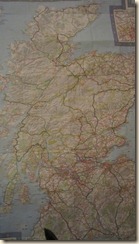 So bottom left to not quite top right
So bottom left to not quite top right
 Connel “Ferry” – another former railway bridge being used as a main road crossing.
Connel “Ferry” – another former railway bridge being used as a main road crossing.
I stopped off at the memorial to the WWII Commandos who trained in the Highlands at Spean Bridge.
Then I stopped off at the Caledonian Canal at Fort Augustus (built by Thomas Telford)
Fort Augustus was renamed after the 1715 Jacobite Uprising after Prince William Augustus, the Duke of Cumberland, younger son of George II. General Wade built a fort here.
I went to Culloden, which is just east of Inverness.
I had a “tour” of the battlefield. The English army (which did include a number of Scots who were not Jacobite supporters) stood and waited (and shot) while the Scots charged across 500 yards. Between 1,500 and 2,000 Jacobites were killed or wounded in the brief battle, while government losses were lighter with 50 dead and 259 wounded. It reminded me of 1st July 1916, the opening day of the battle of the Somme when the British Army sustained nearly 60,000 casualties.
The aftermath of the battle and subsequent crackdown on Jacobitism was brutal, earning Cumberland (Prince William Augustus) the sobriquet "Butcher".
Visitors’ centre wall; each of the stone projections represents a life lost on the battlefield... The first couple of metres represent the losses of the government forces... The entire remainder being those of the Jacobite forces.
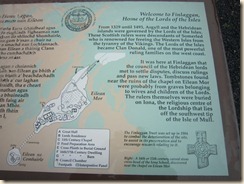
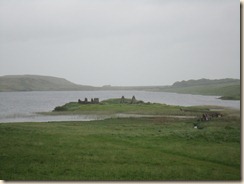
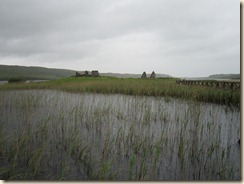
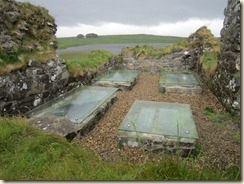
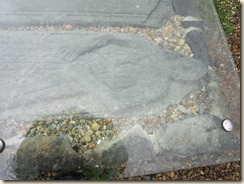
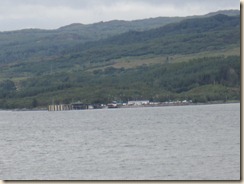
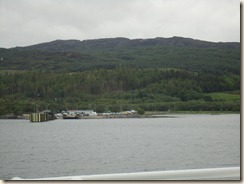
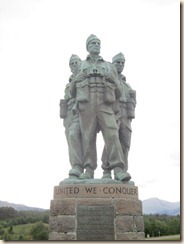


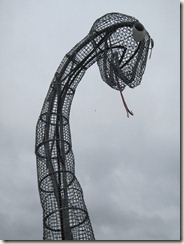
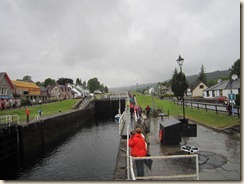
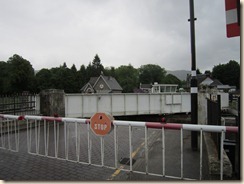
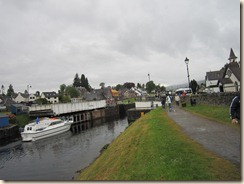
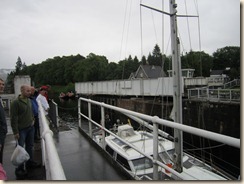

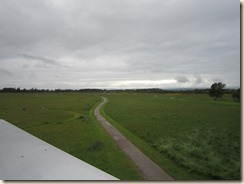
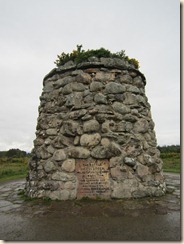
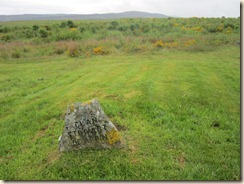
No comments:
Post a Comment